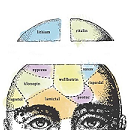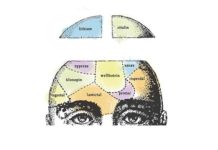“My Suicide Attempt and My Struggles to Get Help”
Marine corps veteran Thomas Brennan tells of his PTSD, suicide attempt, and entry into the psychiatric system that he describes as "three days that convinced...
“Are Benzodiazepines and Antidepressants Making Us Sicker?”
Naturopathic doctor Lauren Deville reviews "Anatomy of an Epidemic" and the evidence that the "chemical imbalance" theorized to underlie mental illness is not only...
“The Way We Diagnose Mental Illness Might Be A ‘Mistake'”
The San Francisco Chronicle reviews Jon Ronson's "The Psychopath Test", which chronicles the meteoric growth of the DSM in "chaotic editorial meetings in a small...
“MHRA Consultant Calls for Antidepressant Use in Young”
Bob Fiddamen dissects the issue of suicidality, bizarre behavior and antidepressants in light of BMJ Open's publication of "Suicide-related events in young people following...
“Dr. Lieberman and ’60 Minutes’”
Phil Hickey of Behaviorism and Mental Health picks apart 60 Minutes' segment interviewing E. Fuller Torrey (Untreated mental illness an imminent danger?), and APA...
“SHIT Happens”
David Healy posits the Secret Health Ingredient in Treatment (SHIT) . . . "In the early twentieth century SHIT was some supposedly secret magic...
“The Allen Frances – Lucy Johnstone Debate”:
Dr. Philip Hickey does the play-by-play on Allen Frances' interchange with Lucy Johnstone about prospective "overreaching" paradigm shifts in mental health. Johnstone, Frances fears,...
“The Best Predictor…” (of Pharmaceutical PR Campaigns)
1 Boring Old Man points out the link between (possibly spurious) research findings and a subsequent wave of media articles and ad campaigns based...
“Does It Make Sense to Scrap Psychiatric Diagnosis?”
Allen Frances considers the overreaches of "paradigm shifts" by the DSM-5 and NIMH, and Lucy Johnstone's call for "a conversation with service users along...
“How to Build a Happier Brain”
The Atlantic offers up "A neuropsychological approach to happiness, by meeting core needs (safety, satisfaction, and connection) and training neurons to overcome a negativity...
“The Doctor/Patient Relationship Comes First, Last, and Always”
Allen Frances traces the history of empathic listening from Philippe Pinel in the early 19th century, through his own recent conversation with Eleanor Longden....
“Book of Lamentations” – DSM-5 as a Dystopian Novel
The New Inquiry reviews the DSM-5, calling it a "classic dystopian novel" in the surrealistic literary tradition of George Orwell, Margaret Atwood, Aldous Huxley,...
“Responding To Organizational Conflict “
Will Hall posts encouraging words for people who encounter disappointment in the organizations they invest their hopes in. "The more we believe our group is...
“Mental Illness: is ‘Chemical Imbalance’ Theory a Myth?”
Canada's The Star traces the "chemical imbalance" story's fall from bedrock scientific principle to marketing device, at the same time that a $70 billion...
“Prisoners of the Psyche: Forced Psychiatry in Today’s Russia”
Compulsory psychiatric treatment of people accused of dissent has fallen from its former prevalence in Russia, with laws passed after the breakup of the...
“Suicidality by Diagnosis – ADHD”
Australia's The Stringer continues to follow the thread of concerns related to ADHD medication; suicidality in children given the drugs, health risks including liver damage...
“Logging In to the Brain’s Social Network”
NPR's Science Friday interviews the author of Social: Why Our Brains Are Wired to Connect on the connection between physical and social pain, and the biology of...
“State of the Re:Union Short: Soteria”
State of the Re:Union, a public radio project that tells "the story of America, one story at a time," devotes a show to stories...
“Suicide Begs Question: Time to Retire a Diagnosis?”
The death of Master Chef contestant Josh Marks, who committed suicide within 24 hours of receiving a schizophrenia diagnosis, inspires PsychCentral writer Patrick Tracey...
“Touching Strangers”
Beyond Meds brings our attention to photo project that brings strangers into intimate contact with each other, and observes the results.
Beyond Meds →
“The Not-So-Hidden Cause Behind the A.D.H.D. Epidemic”
The New York Times returns to the question of whether the explosion of ADHD diagnosis reflects a previously undetected population that was pathologically hyperactive,...
“Is Pain a Construct of the Mind?”
Subtitled "Pain is an emotion," Scientific American's portrait of Dennis Rogers, whose uncanny feats of strength seem predicated on his anomalous relationship to pain...
“The Book of Woe: The DSM and the Unmaking of Psychiatry”
Scientific American says of Gary Greenburg's The Book of Woe "This is a landmark book about a landmark book . . . a picture so...
“Too Much Medicine Is Bad For Our Health”
Calling it "easily the most important meeting I ever attended," psychiatrist Allen Francis writes in Psychiatric Times about the “Preventing Overdiagnosis” conference at Dartmouth.
Article →
“Crazy Like Us: How the U.S. Exports Its Models of Illness”
Psychology Today writes "The fears of many European psychiatrists may soon be realized. Earlier this week, Psychiatric News reported that the American Psychiatric Association has begun petitioning the...









